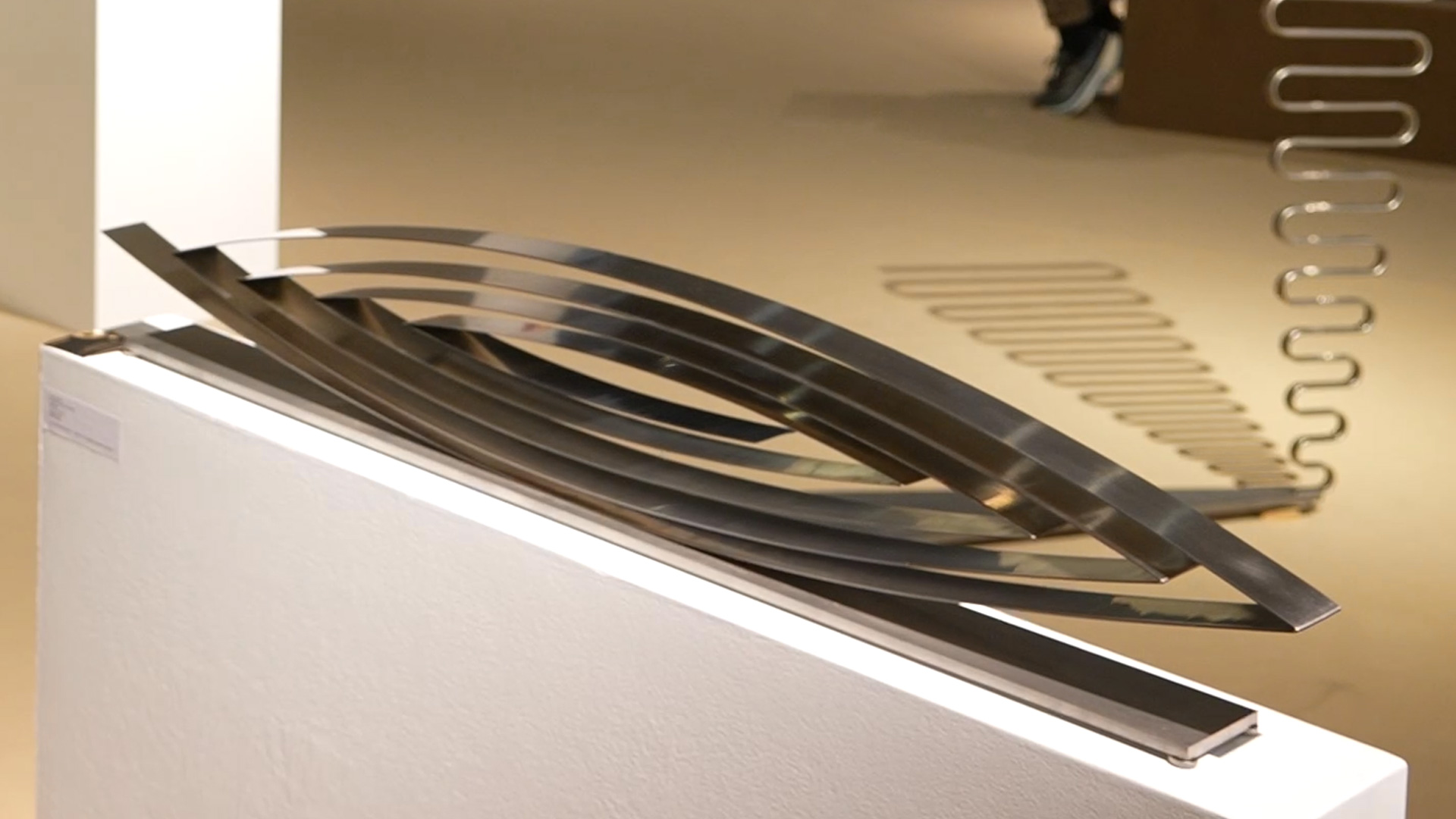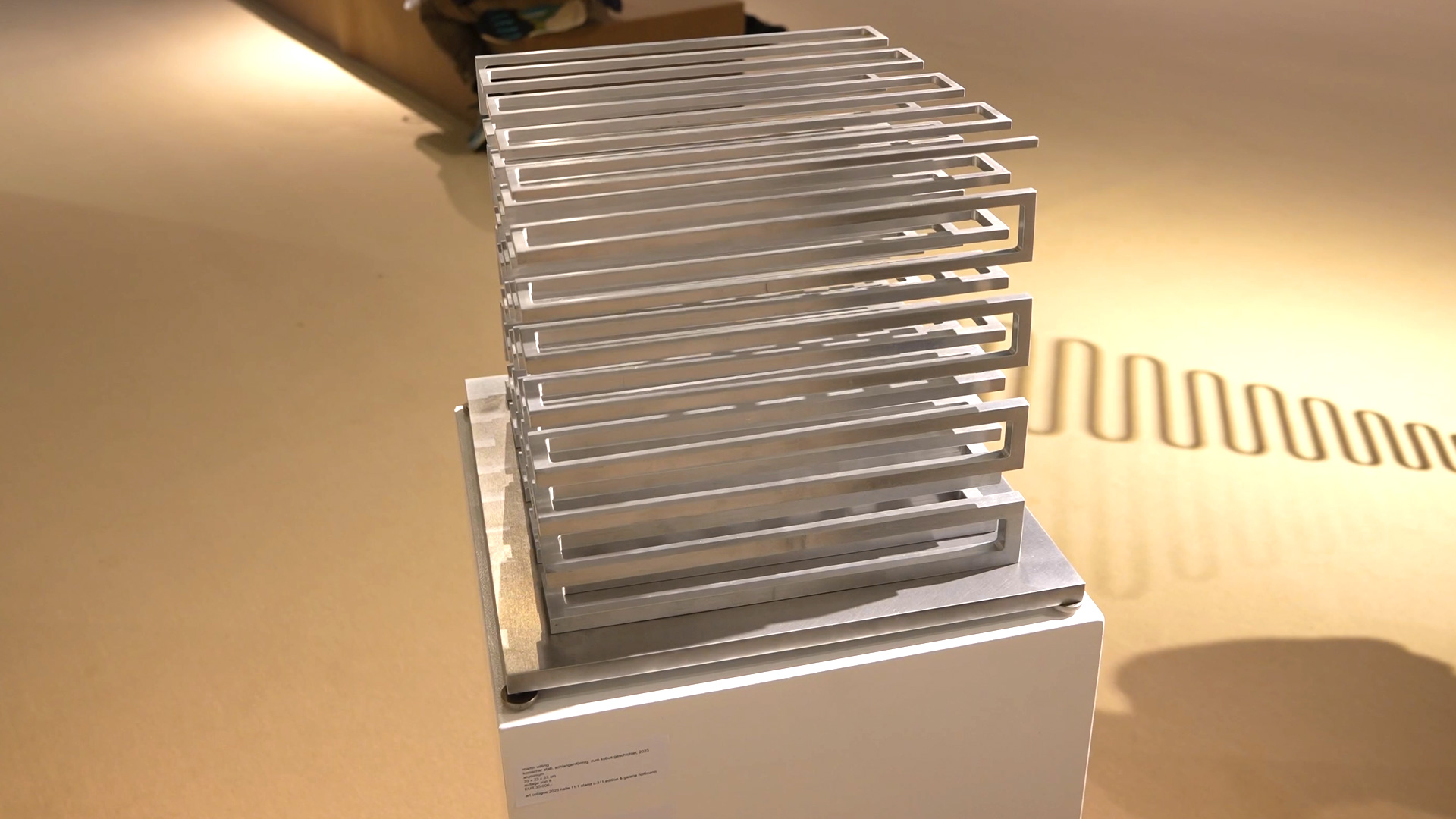Galerie Hoffmann is dedicating a special stand to Cologne-based artist Martin Willing, showcasing his extraordinary combination of art and physics. Willing's sculptures are finely balanced structures that oscillate between stability and instability – they react to air movements, light, and the space itself. Precise calculations result in a quiet, poetic movement that captivates viewers.
Martin Willing is considered a crossover artist between science and art. His works are based on physical principles, which he translates into formal aesthetics. The basic idea behind his sculptures is the “rod winding its way through space” – a line that makes movement, tension, and space equally tangible. Each work seeks a balance between stability and vibration, between static form and lively movement.

At Art Cologne, Gallery Hoffmann is showing works such as the “Großer Schaukler” and the “Schlängelndes Band.” Both sculptures are examples of Willing's precisely researched mechanics. The “Großer Schaukler” reacts to even the slightest changes in air pressure – for example, when a window is opened. The “Schlängelnde Band” spirals upward, begins to swing gently, and allows light and shadow to glide across its surface. This movement is not caused by an external drive, but solely by the physical tension in the material.
Willing's sculptures are mostly made of aluminum, stainless steel, or titanium. These metals allow for precise coordination of elasticity and strength. Only at the exact boundary between these two properties does the desired slow, almost meditative movement arise. The works thrive on this moment of balance—a tension that neither rests nor tips over.

A fascinating aspect of Willing's work is his collaboration with material manufacturers. Companies develop special metal alloys and make them available to the artist for artistic experimentation. In return, Willing provides in-depth insights into their behavior, which in turn feed back into research. This creates a mutual exchange between art and science – a symbiosis that makes his work unique.

The presentation at Gallery Hoffmann makes it clear that movement in Willing's work is not an effect, but its essence. His sculptures change with the light of day, with the wind and temperature.